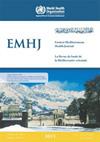摩洛哥针对已婚妇女的暴力行为的发生率、社会人口和经济决定因素
IF 1.9
4区 医学
Q3 HEALTH CARE SCIENCES & SERVICES
引用次数: 0
摘要
背景:对妇女的暴力行为是世界范围内的一个公共卫生问题,影响着妇女、儿童和家庭的身心健康。目的:确定导致摩洛哥妇女遭受暴力的社会人口和经济因素,并提出预防和减少暴力的建议。研究方法本研究的数据来自 2018 年全国人口和家庭健康调查。我们采用卡方检验和 t 检验来研究一些社会人口和经济变量与暴力侵害妇女行为之间可能存在的关联。我们进行了逻辑回归,以显示变量之间的同步关联。研究结果在 9969 名 15-49 岁的已婚妇女中,15.0% [CI(95%):14.3-15.7%] 在调查前的 12 个月内遭受过暴力行为(城市地区为 17.0%,农村地区为 11.9%)。暴力侵害妇女行为与年龄、初婚年龄、婚姻状况、所生子女总数、教育程度、财富指数、户主、就业状况、就业决策者、婚姻次数、吸烟、与丈夫的关系、丈夫的年龄、丈夫的教育程度、丈夫的一夫多妻制、居住地区和居住区域有很大关系(P < 0.05)。结论在摩洛哥,暴力侵害妇女行为已成为地方病,对人口健康和国家经济造成了严重后果。有必要加强和完善公共卫生计划,以持续预防或减少该国的暴力侵害妇女行为。同样重要的是采取行动,减少风险因素,并为受害者提供适当和优质的护理。本文章由计算机程序翻译,如有差异,请以英文原文为准。
Prevalence, socio-demographic and economic determinants of violence against ever-married women in Morocco
Background: Violence against women is a public health issue worldwide, affecting the physical and mental wellbeing of women, children and families. Aim: To determine the socio-demographic and economic factors contributing to violence against women in Morocco and offer recommendations for the prevention and reduction of violence. Methods: Data for this study was obtained from the 2018 National Population and Family Health Survey. We applied the Chi-square test and t-test to study the possible associations between some socio-demographic and economic variables and violence against women. We performed a logistic regression to indicate the simultaneous association of the variables. Results: Among 9969 ever-married women aged 15–49, 15.0% [CI (95%): 14.3-15.7%] had suffered an act of violence in the last 12 months preceding the survey (17.0% in urban and 11.9% in rural areas). Violence against women depended significantly on age, age at first marriage, marital status, total children ever born, educational level, wealth index, being a household head, employment status, decision-maker regarding employment, number of marriages ever had, smoking, relationship with the husband, husband's age, husband's educational level, husband’s polygamy, area of residence, and region of residence (P < 0.05). Conclusion: Violence against women has reached endemic proportions in Morocco and this has serious consequences for population health and the country's economy. There is a need to reinforce and better structure public health programmes to sustainably prevent or reduce violence against women in the country. It is also important to take actions to mitigate the risk factors and provide adequate and quality care for victims.
求助全文
通过发布文献求助,成功后即可免费获取论文全文。
去求助
来源期刊

Eastern Mediterranean Health Journal
HEALTH CARE SCIENCES & SERVICESPUBLIC, ENV-PUBLIC, ENVIRONMENTAL & OCCUPATIONAL HEALTH
CiteScore
3.30
自引率
4.80%
发文量
112
期刊介绍:
The Eastern Mediterranean Health Journal, established in 1995, is the flagship health periodical of the World Health Organization Regional Office for the Eastern Mediterranean.
The mission of the Journal is to contribute to improving health in the Eastern Mediterranean Region by publishing and publicising quality health research and information with emphasis on public health and the strategic health priorities of the Region. It aims to: further public health knowledge, policy, practice and education; support health policy-makers, researchers and practitioners; and enable health professionals to remain informed of developments in public health.
The EMHJ:
-publishes original peer-reviewed research and reviews in all areas of public health of relevance to the Eastern Mediterranean Region
-encourages, in particular, research related to the regional health priorities, namely: health systems strengthening; emergency preparedness and response; communicable diseases; noncommunicable diseases and mental health; reproductive, maternal, child health and nutrition
-provides up-to-date information on public health developments with special reference to the Region.
The Journal addresses all members of the health profession, health educational institutes, as well as governmental and nongovernmental organizations in the area of public health within and outside the Region.
 求助内容:
求助内容: 应助结果提醒方式:
应助结果提醒方式:


